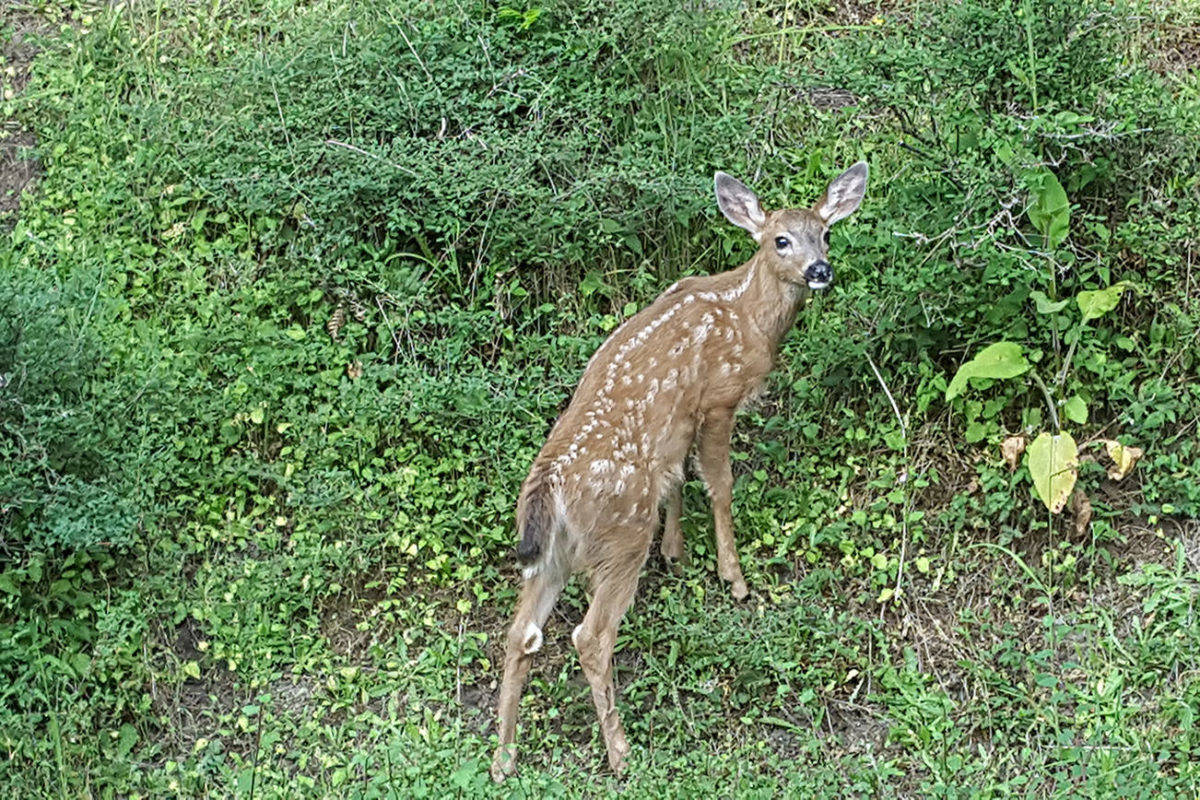Submitted by Kwiaht
How many deer do we have in the islands? Are they inbred? How often do they travel from island to island? Islanders are invited to help answer these questions and more by collecting deer pellets for the Lopez-based conservation laboratory Kwiaht.
Columbian black-tailed deer are native to the San Juan Islands and have long been a local source of food for island families. Pre-contact archaeological sites are rich in deer bones. Early European explorers saw herds of deer swimming between the islands pursued by Coast Salish hunters in canoes; and observed Coast Salish villagers burning underbrush to improve deer habitat, and sometimes to drive deer into nets and pounds. The Hudsons Bay Company hired professional hunters in the San Juan Islands to supply trading posts with venison. Wolf packs roamed the islands until they were exterminated in the 1870s, but in the absence of bears or cougars, which were never native to the islands, people remained the primary predators of island deer. Since the 1950s, human hunting has declined sharply, however, island deer populations have grown to a level that exasperates gardeners and threatens native wildflowers, shrubs, and trees. Kwiaht researchers have found that the presence or absence of deer is the main factor determining the size and number of camas flowers in different parts of the islands.
A number of Lopez and Decatur middle school students recently studied the possibility of using genetics to monitor the size, health and movements of island deer populations. First, they had to find a way of collecting deer DNA without trapping or killing a large number of deer. With the help of Kwiaht’s laboratory manager Madrona Murphy, they gathered fresh deer pellets and tried extracting DNA from the pellets’ greasy surface. DNA quality turned out to be good enough to determine whether each pellet had come from a female or a male deer. Students concluded that they could use deer-pellet DNA to identify individual deer from the pellets they trail behind during their travels, and proposed that pellet samples be solicited throughout the county to explore this possibility.
A generous private donation has now made it possible to process such a large number of samples, and begin to answer questions about the islands’ deer population as a whole. Kwiaht’s goal is to collect at least one hundred samples from each of the larger islands this winter, and to analyze and compare the DNA from at least fifty samples to determine how closely related (how recently mated) are the deer on different islands.
Participating in this youth-initiated study is easy. Pick up a sampling kit from Kwiaht’s Lopez office in Lopez Plaza, Suite No. 9, from Orcas Island Library, or from the WSU Extension Office at Skagit Valley College in Friday Harbor. Each kit contains a disposable plastic glove for handling deer pellets, a plastic tube containing a non-toxic preservative, and a label card. Up to three deer pellets from the same fresh deposit go into the plastic tube. Write the date, location of the sample, and whether it came from a clumped or scattered deposit on the label; and return everything to the same place that you picked up the kit. Include your contact information to receive an analysis of your sample.
Samples of muscle tissue from hunters or road kill salvage are also welcomed and can be submitted using the same kits. Including the sex of the deer on the label card will help students verify the accuracy of their genetic sexing of deer from DNA.
For more information visit www.kwiaht.org or contact Madrona Murphy at kwiaht@gmail.com or 360-468-2808.




